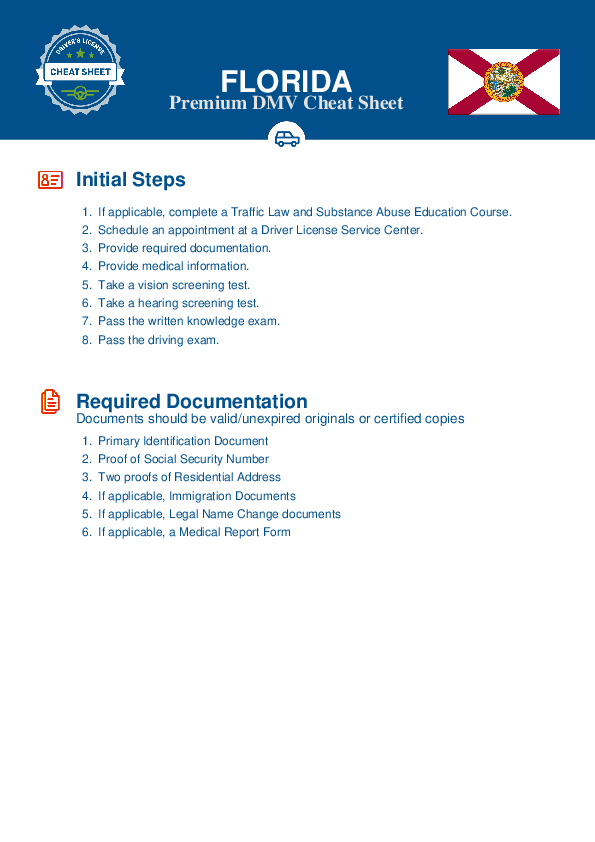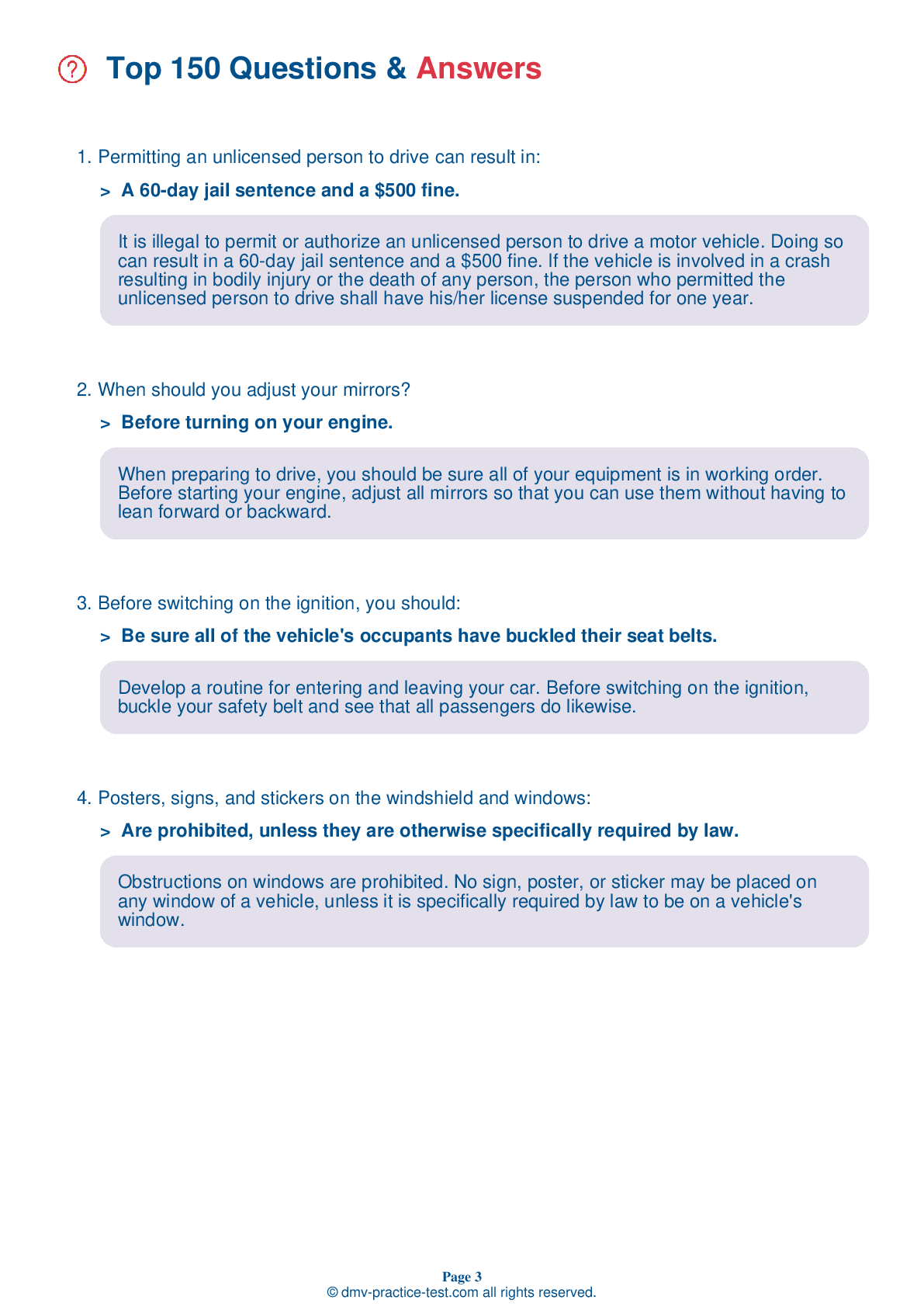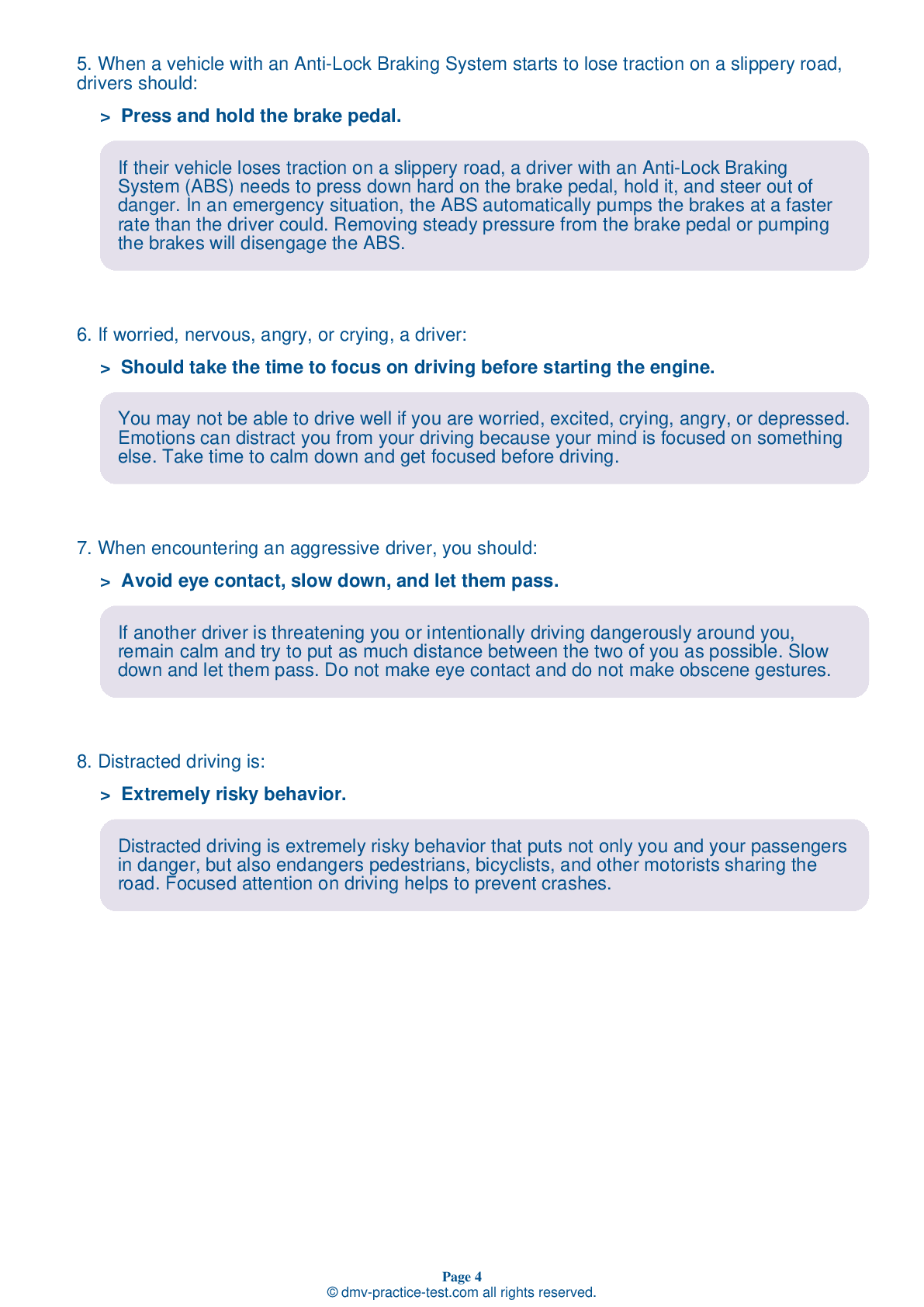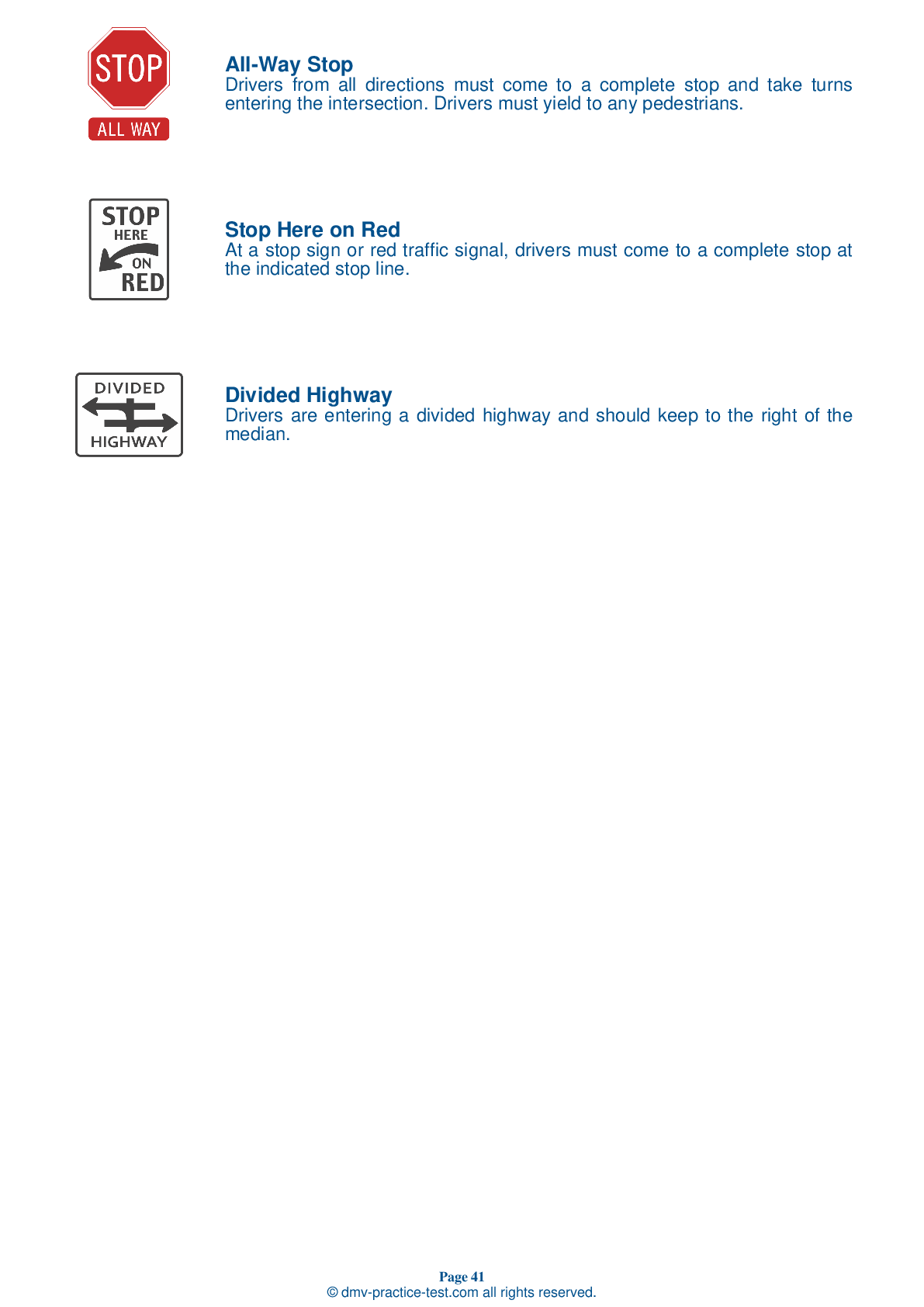FREE Florida DMV Practice Test #6 Page 2 of 7
This set of DMV practise tests for the Florida has been updated for January 2025. It includes questions based on the most important traffic signs and laws for 2025 from the Florida Driver Handbook. To study for the DMV driving permit test and driver's licence exam, use actual questions that are very similar (often identical!) to the DMV driving permit test and driver's licence exam.
Each question on the practise exam has a tip and explanation to help you recall the ideas. Questions about traffic rules, traffic signs, and driving statutes, as well as information from the Driver Handbook, will be included in the written portion of the official DMV test.
You must properly answer 40 of the 50 questions to receive the required passing mark. To help you prepare for your Florida instruction permit or driver's licence, take our DMV practise test.
The DMV exam is offered in a variety of languages.
Using any kind of testing assistance will result in an automatic fail, and the DMV may take additional action against your driver's licence, so stay away from it.
8 . Lanes of traffic moving in the same direction are divided by ____ lines.
Solid white lines are used to separate lanes traveling in the same direction (as well as to mark the right edge of the road). Broken white lines separate lanes traveling in the same direction and may be crossed to pass. Yellow lines separate lanes of traffic moving in opposite directions.
9 . This sign means:
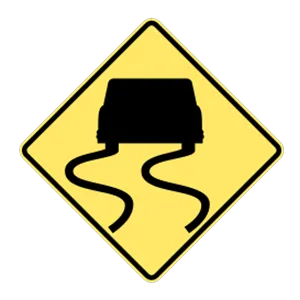
This sign warns that the road is slippery when wet.
10 . If you experience a tire blowout:
If you experience a tire blowout, take your foot off the gas pedal and do not immediately apply the brakes. Gradually slow down before gently applying the brakes and pulling off the side of the road.
11 . To help relieve fatigue on a long trip, it is a good idea to:
To avoid becoming fatigued while taking a long trip, stop every two hours for a short break. If you become drowsy, pull off the road and park in a safe place to take a nap, or find a room to stay for the night.
12 . If another car is in danger of hitting you, you should:
Your horn should be used to warn other drivers or pedestrians in situations where they may not see you. For example, if you think another driver is about to hit you, you should sound your horn.
13 . This sign means:
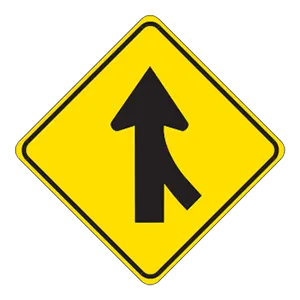
Warning signs prepare drivers for upcoming road conditions and hazards and are usually yellow with black markings. This sign alerts drivers to potential traffic merging from the right. Drivers should prepare to allow the traffic to merge safely.
14 . When turning left, drivers must yield the right-of-way to:
When turning left, drivers must yield the right-of-way to oncoming traffic. Drivers must also always yield the right-of-way to pedestrians, bicyclists, and other drivers who are already in the intersection.
See the exact questions that will be on the 2025 Florida DMV exam.
99.2% of people who use the cheat sheet pass the FIRST TIME
LT gives us an insight on how the cheat sheet provided her with all the study questions she needed before taking her test.
Joe initially studied with the handbook and failed his test, he eventually found us online, studied and pass his test the first time around.
